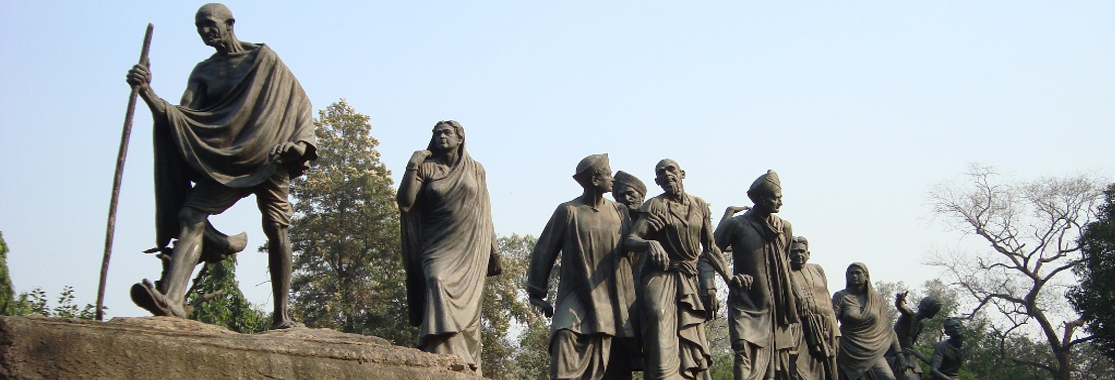The cycle of Non–violence
Starting : 11 murti
Sites:
11 murti, 3 murti, Gandhi smriti
Time Duration: 11 murti, 3 murti, Gandhi smriti
Who all can join in ? :
ALL are welcome with a mind of an explorer
What to wear:
1) comfortable shoes and clothes
Generations to come, it may well be, will scarce believe that such a man as this one ever in flesh and blood walked upon this Earth.” Said Dr.Albert Einstein about the great soldier of non‐violence‐ Mahatma Gandhi. Find out about the life and struggle of this hero, who bought the Mighty kingdom of Britain to its knees without the use of any violence. The father of the nation, The mahatma and the great leader, who not only led India to freedom from the colonial rule but Whose ideas also, inspired Nelson Mandela’s fight against the apartheid in South Africa.
Statue of Dandi March The massive, glistening black sculpture depicting Gandhi’s iconic Dandi March of 1931 stands proudly in the heart of the city, easily visible on the Sardar Patel Marg, near Willingdon Crescent. This poetic sculpture by veteran artist and sculptor Devi Prasad Roy Chowdhury shows ten Indian people following Gandhi on his path-breaking Civil Disobedience protest, hence the name – ‘Gyarah Murti’.
Teen Murti House Originally called Flagstaff House,Teen Murti Bhavan was the official residence of the British Commander-in-Chief. After Independence, Jawaharlal Nehru, India’s first Prime Minister, resided here till his death in 1964. Later, Teen Murti was converted into a national memorial dedicated to him. The memorial comprises a library and a museum. Depicting various facets of Nehru’s life, it has a fine collection of rare photographs from his family album, his personal letters and newspaper clippings about the Indian National Movement. Through large glass panes, visitors can view his bedroom, study room and drawing room. The Nehru Memorial Library is an excellent research centre for Indian history. You will find institutional records and papers and correspondence of individuals.
Gandhi Smriti The moment you enter the museum, your head bows down in respect for the immortal soul of Mahatma Gandhi. An imposing statue of the Mahatma with a girl and a boy holding a dove can be seen at the entrance. Situated on Tees January Marg, which commemorates Mahatma’s martyrdom, the Museum is a tribute to the Mahatma’s memory. It is here that Mahatma Gandhi spent the last 144 days of his life. The building originally belonged to the Birlas and was known as the Birla House. It was acquired by the Government of India in 1971 and later converted into a memorial in 1973. Situated in a tranquil place, the museum was designed to showcase the various aspects of the Mahatma’s life — his ideas, principles and values. The museum houses his personal belongings along with some rare photographs, relics and frescoes. Gandhiji’s quotes are on display for the visitors. The room in which he lived and the prayer ground have been preserved as they were during Mahatma’s lifetime. Concrete footprints trace his last steps from the room to the prayer ground. A martyr’s column marks the place where he was assassinated




